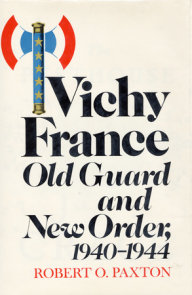

The Anatomy of Fascism
By Robert O. Paxton
By Robert O. Paxton
By Robert O. Paxton
By Robert O. Paxton
Category: Politics | European World History
Category: Politics | European World History

-
$18.00
Mar 08, 2005 | ISBN 9781400033911
-
Dec 18, 2007 | ISBN 9780307428127
YOU MAY ALSO LIKE

What They Fought For 1861-1865

Palladian Days

A Practical Handbook for the Actor

The Red Room

Step by Step

The Wall Street Journal. Complete Real-Estate Investing Guidebook

Murder Machine

American Kompromat

Flashman and the Mountain of Light
Praise
“So fair, so thorough and, in the end, so convincing, it may well become the most authoritative . . . study of the subject. . . . A splendid book.” –The New York Times Book Review
“Useful and timely. . . . Mussolini and Hitler were the prototypical fascist leaders, and Paxton chronicles their rise to power–and their global influence and ultimate fall–with a brilliant economy.” –San Francisco Chronicle
“A deeply intelligent and very readable book. . . . Historical analysis at its best.” –The Economist
“[A] helpful contribution, thoughtfully mapping out the descent of a civilized people — first the Italians, then the Germans — into a primal state (and state of being) ruled by mythology, symbol and emotion. . . . Serves as a reminder of our power and responsibility.” –The Washington Post Book World
“Until now there has been no satisfying account of fascism that includes a convincing diagnostic kit for identifying its symptoms. . . . Robert Paxton steps in to restore sanity, with his view that fascism is not what was believed but what was done.” –Los Angeles Times Book Review
Table Of Contents
Preface
Chapter 1 Introduction
The Invention of Fascism
Images of Fascism
Strategies
Where Do We Go from Here?
Chapter 2 Creating Fascist Movements
The Immediate Background
Intellectual, Cultural, and Emotional Roots
Long-Term Preconditions
Precursors
Recruitment
Understanding Fascism by Its Origins
Chapter 3 Taking Root
Successful Fascisms
—(1) The Po Valley, Italy, 1920–22
—(2) Schleswig-Holstein, Germany, 1928–33
An Unsuccessful Fascism: France, 1924–40
Some Other Unsuccessful Fascisms
Comparisons and Conclusions
Chapter 4 Getting Power
Mussolini and the “March on Rome”
Hitler and the “Backstairs Conspiracy”
What Did Not Happen: Election, Coup d’Etat, Solo Triumph Forming Alliances
What Fascists Offered the Establishment
The Prefascist Crisis
Revolutions after Power: Germany and Italy
Comparisons and Alternatives
Chapter 5 Exercising Power
The Nature of Fascist Rule: “Dual State” and Dynamic Shapelessness
The Tug-of-War between Fascists and Conservatives
The Tug-of-War between Leader and Party
The Tug-of-War between Party and State
Accommodation, Enthusiasm, Terror
The Fascist “Revolution”
Chapter 6 The Long Term: Radicalization or Entropy?
What Drives Radicalization?
Trying to Account for the Holocaust
Italian Radicalization: Internal Order, Ethiopia, Salò
Final Thoughts
Chapter 7 Other Times, Other Places
Is Fascism Still Possible?
Western Europe since 1945
Post-Soviet Eastern Europe
Fascism Outside Europe
Chapter 8 What Is Fascism?
Conflicting Interpretations
Boundaries
What Is Fascism?
Bibliographical Essay
Notes
Index
21 Books You’ve Been Meaning to Read
Just for joining you’ll get personalized recommendations on your dashboard daily and features only for members.
Find Out More Join Now Sign In











